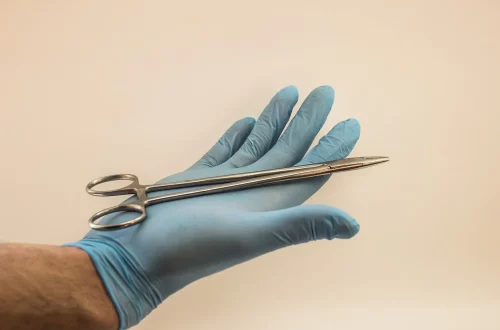
Understanding Common Issues with Dogs’ Hind Legs and Their Care
Understanding the intricacies of canine anatomy can significantly enhance a pet owner’s ability to recognize and respond to their dog’s needs, particularly concerning their hind legs. The hind legs of dogs are crucial for mobility, balance, and overall well-being. As dogs age or engage in vigorous activities, they may experience various issues that affect the functionality and health of their hind limbs. Observing changes in your dog’s behavior, such as limping, reluctance to jump, or unusual sitting positions, can indicate potential underlying problems.
In addition to physical changes, a dog’s emotional and mental state can also be affected by hind leg issues. Pain or discomfort can lead to anxiety and stress, impacting their quality of life. Understanding the common issues that dogs face regarding their hind legs allows pet owners to take proactive measures, ensuring their furry companions receive the necessary care and attention. Although some problems may seem minor, addressing them promptly can prevent more severe conditions from developing.
By being informed and attentive, dog owners can create a supportive environment that promotes their pet’s health and happiness. The following sections will delve into various common issues related to dogs’ hind legs, providing insights and care tips that can empower owners to take the best possible care of their beloved pets.
Common Injuries in Dogs’ Hind Legs
Injuries to a dog’s hind legs are among the most frequent issues that pet owners encounter. These injuries can result from various factors, including accidents, rough play, or even underlying health conditions. Among the most common injuries are sprains, strains, and fractures.
A sprain occurs when the ligaments that connect bones at a joint are stretched or torn. In dogs, this often happens during sudden movements or falls. Symptoms of a sprain may include limping, swelling, and pain when the affected leg is touched. Strains, on the other hand, involve muscles or tendons and can also result from overexertion or awkward movements. When a dog has a strain, owners may notice stiffness and reluctance to use the injured limb.
Fractures are more severe injuries that require immediate veterinary attention. They can occur due to high-impact accidents, such as being hit by a car or falling from a height. A dog with a fracture will typically show signs of extreme pain, inability to bear weight on the affected leg, and visible deformities in severe cases.
Preventing hind leg injuries involves ensuring that your dog has a safe environment to play in. Regular exercise is essential for maintaining muscle strength and flexibility, which can help reduce the risk of injuries. Additionally, using protective gear, like dog boots during outdoor activities, can provide extra support and protection.
If you suspect your dog has suffered an injury, it is crucial to consult a veterinarian for an accurate diagnosis and appropriate treatment. Early intervention can make a significant difference in recovery time and overall health.
Arthritis and Joint Problems
Arthritis is one of the most prevalent health issues affecting older dogs, though it can also occur in younger dogs due to genetic predispositions or injuries. This degenerative condition affects the joints, leading to inflammation and pain, which can significantly impact a dog’s mobility and quality of life.
There are various types of arthritis, including osteoarthritis and rheumatoid arthritis. Osteoarthritis is the most common form, generally resulting from wear and tear on the joints over time. Symptoms of arthritis can be subtle at first, including difficulty getting up, reluctance to exercise, and a noticeable decrease in activity levels. As the condition progresses, dogs may exhibit limping, stiffness, and pain, especially after prolonged periods of rest.
Managing arthritis in dogs involves a combination of veterinary care, lifestyle adjustments, and, in some cases, medication. Veterinarians may prescribe anti-inflammatory drugs or joint supplements, such as glucosamine and chondroitin, to help manage pain and improve joint function. Additionally, maintaining a healthy weight is crucial, as excess weight can put additional strain on already stressed joints.
Regular, low-impact exercise can also be beneficial. Activities such as swimming or short, gentle walks can help keep joints flexible without causing excessive strain. Furthermore, providing a comfortable resting area with soft bedding can help alleviate pressure on sore joints.
It’s essential for dog owners to work closely with their veterinarian to develop a tailored management plan that suits their dog’s specific needs. This proactive approach can significantly enhance their quality of life and allow them to continue enjoying their favorite activities.
Hip Dysplasia: A Common Genetic Condition
Hip dysplasia is a genetic condition that affects many dog breeds, particularly larger and active breeds. This malformation occurs when the hip joint does not fit properly into the hip socket, leading to joint instability and eventually arthritis. It is often inherited, but factors such as nutrition, rapid growth, and excessive exercise can also contribute to the severity of the condition.
Dogs with hip dysplasia may show signs of discomfort, including difficulty rising, reluctance to jump or climb stairs, and an altered gait. As the condition progresses, owners may notice increased stiffness and pain, particularly after periods of rest.
Early diagnosis is crucial for managing hip dysplasia effectively. Vets may perform physical examinations and recommend imaging techniques, such as X-rays, to assess the severity of the condition. Treatment options vary based on the severity of the dysplasia and may include weight management, physical therapy, and pain relief medications. In severe cases, surgical options such as total hip replacement may be considered.
Preventative measures play a vital role in managing hip dysplasia. Ensuring that puppies receive proper nutrition and are not over-exercised during their growth phase can reduce the likelihood of developing this condition. Additionally, regular veterinary check-ups can help detect early signs of hip dysplasia, allowing for timely intervention.
For dog owners, understanding the signs and implications of hip dysplasia can lead to better health outcomes for their pets. With appropriate care and management, dogs with hip dysplasia can lead happy, active lives.
Signs of Pain and Discomfort in Dogs
Recognizing signs of pain and discomfort in dogs is essential for their well-being. Dogs cannot communicate their feelings verbally, making it imperative for owners to be vigilant about their behavior and physical condition. Changes in a dog’s demeanor or activities can indicate underlying issues, particularly concerning their hind legs.
One of the most common signs of pain is limping or favoring one leg over another. If a dog suddenly becomes less active, avoids certain movements, or seems reluctant to engage in play, these could be red flags. Additionally, changes in posture, such as sitting or lying in unusual positions, can suggest discomfort.
Vocalizations, such as whining or barking, can also indicate that a dog is in pain, although some dogs may become unusually quiet or withdrawn. Behavioral changes, such as increased irritability or aggression, can also be a response to pain.
Monitoring a dog’s weight can also provide insights into their health. Sudden weight loss or gain can be associated with various underlying issues, including pain or mobility problems.
If a dog exhibits any signs of pain or discomfort, it is crucial to consult with a veterinarian promptly. Early diagnosis and intervention can lead to more effective treatment options and improved quality of life for the dog.
In conclusion, while understanding common issues with dogs’ hind legs is vital for any pet owner, this information is not a substitute for professional veterinary advice. Always consult a veterinarian for any health concerns regarding your pet. Taking proactive steps can significantly enhance your dog’s quality of life, ensuring they remain happy and healthy companions.




